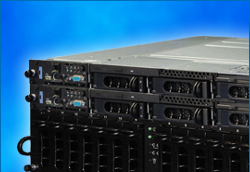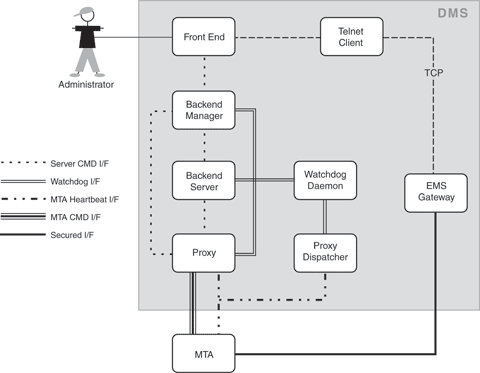Device Management System
Next Generation CPE Device Management System
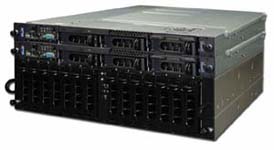
The DMS system is a scalable and reliable management system providing consistent and efficient device management for large scale service deployments of voice and video over IP CPE devices. It is equipped with features of an Element Management System (EMS) for MIB configuration, as well as Event, Alarm, and Fault Management. While designed for large scale deployments, the DMS system retains effective individual device control by remotely accessing the device’s native utilities such as Telnet and device Web management. In addition to the device management features, the DMS system complements device initiated provisioning by providing asynchronous system initiated provisioning triggers for near real-time device configuration and firmware upgrade, making it ideal for managing feature rich service offerings using voice and video over IP CPE devices. The DMS system is capable of even managing devices deployed behind NAT/firewall routers, thus, offering reliable device management for service deployment in diverse IP environments.
FEATURES
Highly-Scalable & Redundant Architecture
The DMS system’s load balancing server farm architecture allows it to be highly scalable. Additionally, the system is built on a pair of dual, redundant servers with shared RAID storage. Thus in the event of a hardware failure, the DMS services are migrated seamlessly to the backup node with a minimum downtime, typically less than a minute.
Element Management Capabilities
The DMS system is equipped with features of an Element Management System:
• A network view of device distribution
• MIP configuration
• Traps, Events, Alarms, and fault management
• Performance monitoring
Remote Device Access
The DMS system creates reliable and efficient tunnels to enable access, monitor, control, and configure remote devices using SNMP (GET, SET) or device native interfaces such as Telnet and Web, allowing operators to have real-time and interactive control over CPE devices via the same look and feel utilities.
Firewall Friendly
The DMS system can manage devices deployed behind NAT/firewalls. All the device management utilities, native (Telnet or Web) or remote (SNMP), are preserved in the presence of customer premises NAT/firewalls.
Convenient Device Sorting and Search
The DMS system provides a convenient and an efficient device sorting and search mechanism using device region information, device status (on-line, off-line), device firmware versions, device event severity, device MAC/IP, or user ID.
Asynchronous Provisioning Control
The DMS system offers a vehicle to trigger asynchronous and system initiated reprovisioning for near real-time device parameter updates and/or firmware upgrades. Additionally, the DMS system also allows remote resets of devices.
Well Defined SOAP-Based Interface
The DMS system has a well defined SOAP-based interface, allowing interaction to external elements such as an OSS or other management entities.
TECHNICAL HIGHLIGHTS
Integrated CPE Management Solution
The InnoMedia Device Management System (DMS) can be used as a self-contained Element Management System, or as an integrated part of InnoMedia’s total CPE management solution which consists of DMS, VSP-5000 Auto-Provisioning System, and GVSP.
The DMS system works cohesively with InnoMedia’s VSP-5000 Auto-provisioning System and GVSP to form a complete CPE device management solution. The VSP-5000 system provides device Auto-provisioning for plug-and-play device configuration and upgrades, and the DMS system enables reliable and efficient device remote management. The GVSP system facilitates regional management as well as service class partitioning, and manages CPE management servers (VSP-5000 and DMS) in a scalable and hierarchical manner, allowing service operators to have staged and well managed service deployments.
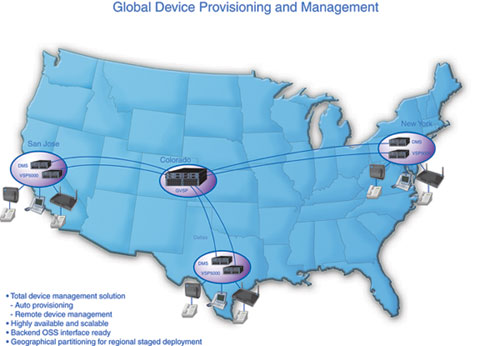
Scalable and Redundant Architecture
To ensure maximum scalability, the DMS system uses server farm architecture to realize the functions of Proxy, Backend Server, and Backend Manager. A Proxy Dispatcher is used to dynamically balance proxy loads to achieve high scalability.
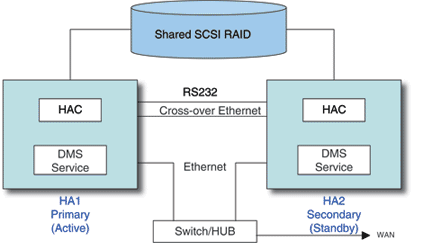
For redundancy, the DMS system employs an Active-Standby architecture consisting of a primary and a secondary server with a single external IP address, plus a shared RAID storage to ensure database integrity.
Remote Device Management using Device’s Native Management Utilities
The DMS system allows operators or system support personnel to access and manage devices using their native management utilities such as Telnet and Web management.
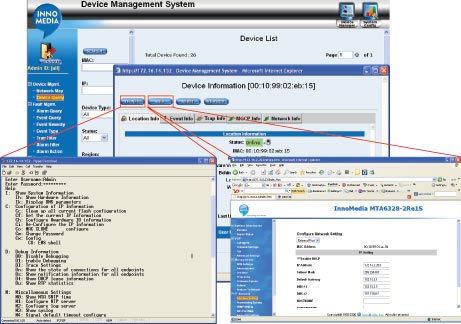
Device Search and Sorting
The DMS system provides an easy-to-use user interface for flexible device search and sorting. The search can be based on device region information, device status (on-line, off line), device firmware versions, device event severity, device MAC/IP, or user ID.
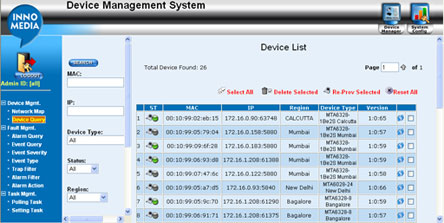
Well-Defined Interfaces for System Integration
The DMS system offers four well-defined interfaces for device management and system integration:
(a) Regular heartbeat messages coming from the CPEs
(b) SNMP polling requests and responses between DMS and CPE
(c) Administration interface between a client machine with web browser and DMS
(d) SOAP interface between GVSP and DMS
While the heartbeat messages and SNMP requests and responses offer communication channels between DMS and the devices, the DMS server uses a well-defined SOAP interface to allow system integration with OSS and other management elements. The OSS interface allows the DMS server to receive and process XML and SOAP based commands, so that device and class management operations can be automatically executed by an external OSS system.
Key Benefits
Reliable and effective remote device management, greatly improves customer support effectiveness and reduces service churn rates. Complements CPE auto-provisioning system with network initiated asynchronous device configuration and firmware upgrades, allowing near real-time device updates and service feature activation
Highly scalable and reliable, allowing large scale and staged service launch and deployments
Supports devices deployed behind NAT/firewall routers





